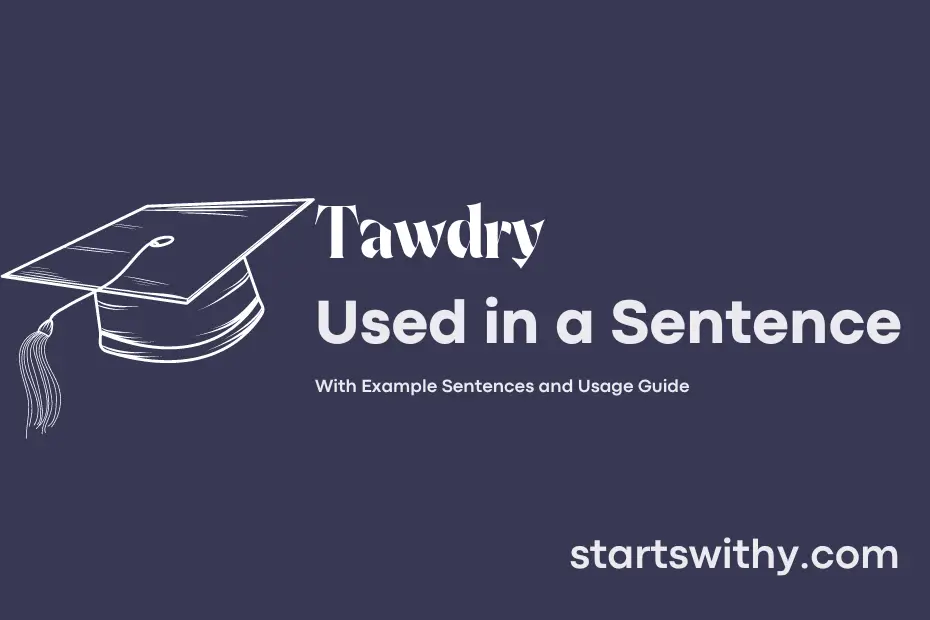Do you know what “tawdry” means? This adjective describes something cheap, showy, and of poor quality.
When we say something is “tawdry,” it typically implies that it lacks elegance or good taste, often appearing flashy or gaudy in a way that is considered tacky or vulgar.
7 Examples Of Tawdry Used In a Sentence For Kids
- I saw a tawdry ribbon on the gift.
- She wore a tawdry necklace to the party.
- The clown’s hat looked very tawdry.
- The shop had a display of tawdry toys.
- The princess wore a tawdry crown.
- The puppet had a tawdry outfit.
- The magician’s cape was tawdry with glitter.
14 Sentences with Tawdry Examples
- Tawdry clothing is not appropriate for college presentations.
- Some students prefer to buy tawdry accessories from local markets.
- She received a tawdry gift from a classmate during the college Secret Santa event.
- The tawdry decorations at the college festival did not impress the attendees.
- He was scolded by his professor for wearing a tawdry shirt to class.
- They decided to go thrift shopping for some tawdry items to wear at the college party.
- The college canteen served tawdry food that many students avoided.
- Despite the tawdry brochure, the college campus tour was impressive.
- The college hostel rooms were decorated with tawdry posters and fairy lights.
- She regretted buying a tawdry phone cover just because it was cheap.
- The college play had tawdry costumes that distracted from the performance.
- They attended a college social where everyone dressed in tawdry outfits.
- The college bulletin board was filled with tawdry flyers advertising various events.
- Many students found the college merchandise to be tawdry and overpriced.
How To Use Tawdry in Sentences?
To incorporate Tawdry into a sentence, consider it as an adjective to describe something cheap, showy, or of poor quality. For example, you can say “She refused to wear the tawdry necklace her ex-boyfriend gave her because it reminded her of their toxic relationship.”
Remember to place Tawdry before a noun to properly convey its meaning. Additionally, try to understand the context in which this word is used to make sure it fits the situation. When using Tawdry in a sentence, it’s essential to provide clear and descriptive language to effectively communicate your message.
Here are a few more examples of sentences using Tawdry:
– The tawdry decorations at the party made it clear that minimal effort was put into planning the event.
– The historical museum refused to display the tawdry replica of the famous painting, opting for authenticity instead.
– The actress was criticized for her tawdry outfit choice at the prestigious award ceremony.
By following these guidelines and practicing using Tawdry in various sentences, you can enhance your vocabulary and effectively express yourself in writing or conversation.
Conclusion
In conclusion, the use of tawdry sentences can detract from the overall quality of writing by lending a cheap, vulgar, or showy tone to the text. These sentences are often flashy or gaudy in an attempt to grab attention, but they can end up overshadowing the intended message or theme of the piece. Writers should strive for clarity, elegance, and tastefulness in their sentence construction to convey their ideas effectively and engage readers meaningfully.
By avoiding tawdry sentences and opting for more refined language choices, writers can enhance the readability and impact of their work. Thoughtful and polished sentences can elevate the quality of writing, contributing to a more sophisticated and engaging reading experience. Ultimately, the art of crafting sentences should prioritize clarity, coherence, and precision over excessive ornamentation or sensationalism for a more effective communication of ideas.



